Shahinur Alam
Deep-learning-based acceleration of MRI for radiotherapy planning of pediatric patients with brain tumors
Nov 22, 2023Abstract:Magnetic Resonance Imaging (MRI) is a non-invasive diagnostic and radiotherapy (RT) planning tool, offering detailed insights into the anatomy of the human body. The extensive scan time is stressful for patients, who must remain motionless in a prolonged imaging procedure that prioritizes reduction of imaging artifacts. This is challenging for pediatric patients who may require measures for managing voluntary motions such as anesthesia. Several computational approaches reduce scan time (fast MRI), by recording fewer measurements and digitally recovering full information via post-acquisition reconstruction. However, most fast MRI approaches were developed for diagnostic imaging, without addressing reconstruction challenges specific to RT planning. In this work, we developed a deep learning-based method (DeepMRIRec) for MRI reconstruction from undersampled data acquired with RT-specific receiver coil arrangements. We evaluated our method against fully sampled data of T1-weighted MR images acquired from 73 children with brain tumors/surgical beds using loop and posterior coils (12 channels), with and without applying virtual compression of coil elements. DeepMRIRec reduced scanning time by a factor of four producing a structural similarity score surpassing the evaluated state-of-the-art method (0.960 vs 0.896), thereby demonstrating its potential for accelerating MRI scanning for RT planning.
SafeNet: An Assistive Solution to Assess Incoming Threats for Premises
Jan 27, 2020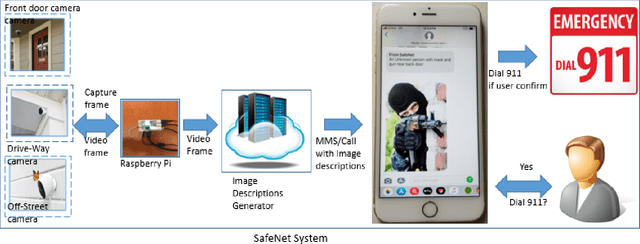

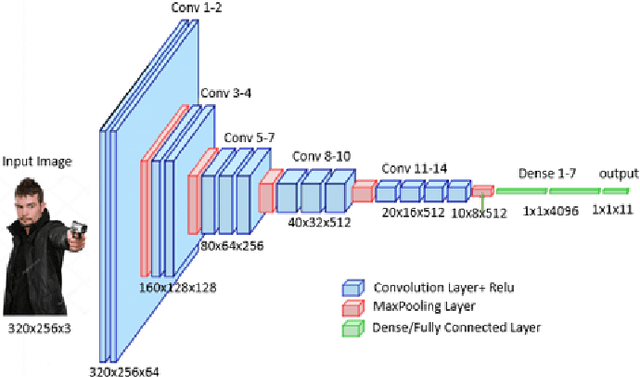
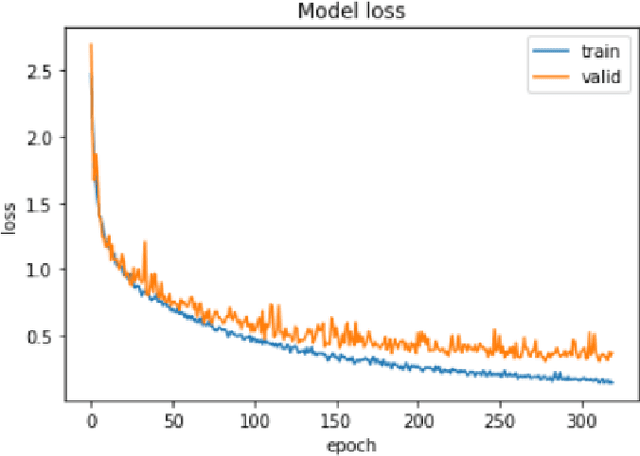
Abstract:An assistive solution to assess incoming threats (e.g., robbery, burglary, gun violence) for homes will enhance the safety of the people with or without disabilities. This paper presents "SafeNet"- an integrated assistive system to generate context-oriented image descriptions to assess incoming threats. The key functionality of the system includes the detection and identification of human and generating image descriptions from the real-time video streams obtained from the cameras placed in strategic locations around the house. In this paper, we focus on developing a robust model called "SafeNet" to generate image descriptions. To interact with the system, we implemented a dialog enabled interface for creating a personalized profile from face images or videos of friends/families. To improve computational efficiency, we apply change detection to filter out frames that do not have any activity and use Faster-RCNN to detect the human presence and extract faces using Multitask Cascaded Convolutional Networks (MTCNN). Subsequently, we apply LBP/FaceNet to identify a person. SafeNet sends image descriptions to the users with an MMS containing a person's name if any match found or as "Unknown", scene image, facial description, and contextual information. SafeNet identifies friends/families/caregiver versus intruders/unknown with an average F-score 0.97 and generates image descriptions from 10 classes with an average F-measure 0.97.
Person Identification with Visual Summary for a Safe Access to a Smart Home
Apr 18, 2019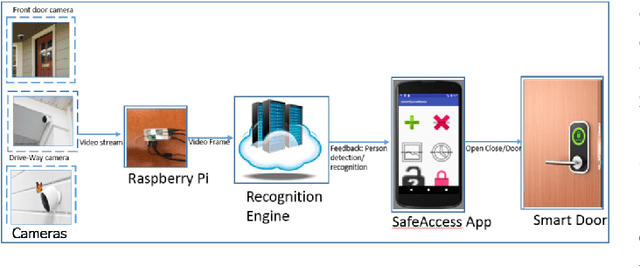

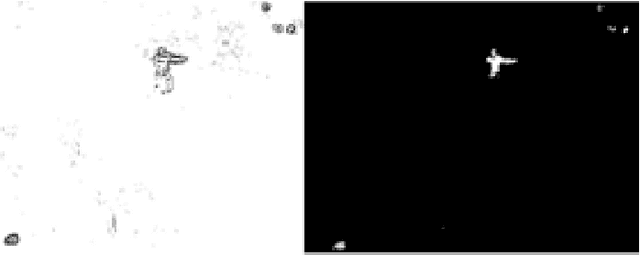

Abstract:SafeAccess is an integrated system designed to provide easier and safer access to a smart home for people with or without disabilities. The system is designed to enhance safety and promote the independence of people with disability (i.e., visually impaired). The key functionality of the system includes the detection and identification of human and generating contextual visual summary from the real-time video streams obtained from the cameras placed in strategic locations around the house. In addition, the system classifies human into groups (i.e. friends/families/caregiver versus intruders/burglars/unknown). These features allow the user to grant/deny remote access to the premises or ability to call emergency services. In this paper, we focus on designing a prototype system for the smart home and building a robust recognition engine that meets the system criteria and addresses speed, accuracy, deployment and environmental challenges under a wide variety of practical and real-life situations. To interact with the system, we implemented a dialog enabled interface to create a personalized profile using face images or video of friend/families/caregiver. To improve computational efficiency, we apply change detection to filter out frames and use Faster-RCNN to detect the human presence and extract faces using Multitask Cascaded Convolutional Networks (MTCNN). Subsequently, we apply LBP/FaceNet to identify a person and groups by matching extracted faces with the profile. SafeAccess sends a visual summary to the users with an MMS containing a person's name if any match found or as "Unknown", scene image, facial description, and contextual information. SafeAccess identifies friends/families/caregiver versus intruders/unknown with an average F-score 0.97 and generates a visual summary from 10 classes with an average accuracy of 98.01%.
 Add to Chrome
Add to Chrome Add to Firefox
Add to Firefox Add to Edge
Add to Edge